In 2021 and 2022, the Philippines was devastated by series of typhoons
Your donations supported communities to respond and recover from the typhoons.
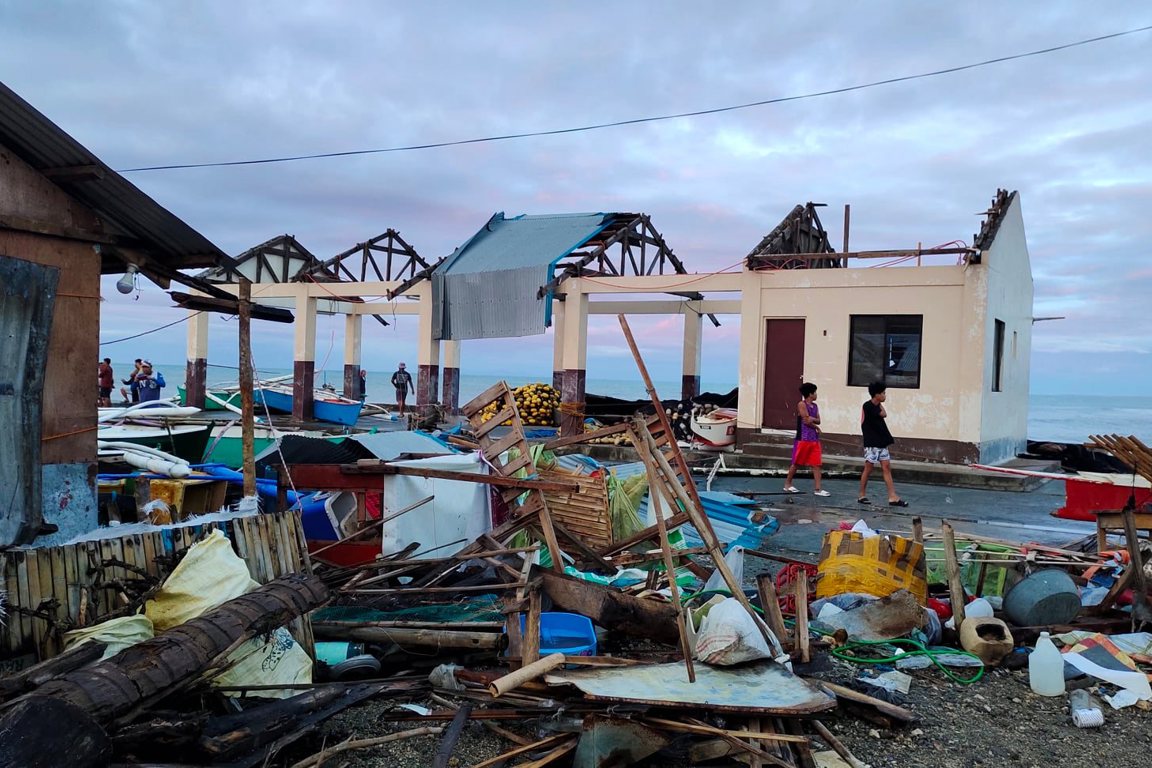
The aftermath of Typhoon Rai, which struck the Philippines in December 2021. Photo: Caritas Philippines
The Philippines typhoon appeal has now closed. Donations made to this appeal helped support immediate relief in the form of food, emergency shelter, access to safe water, hygiene support, and essential items.
You can still make a donation to our Emergency Response Appeal below to help communities that have been affected by disaster and conflict around the world.
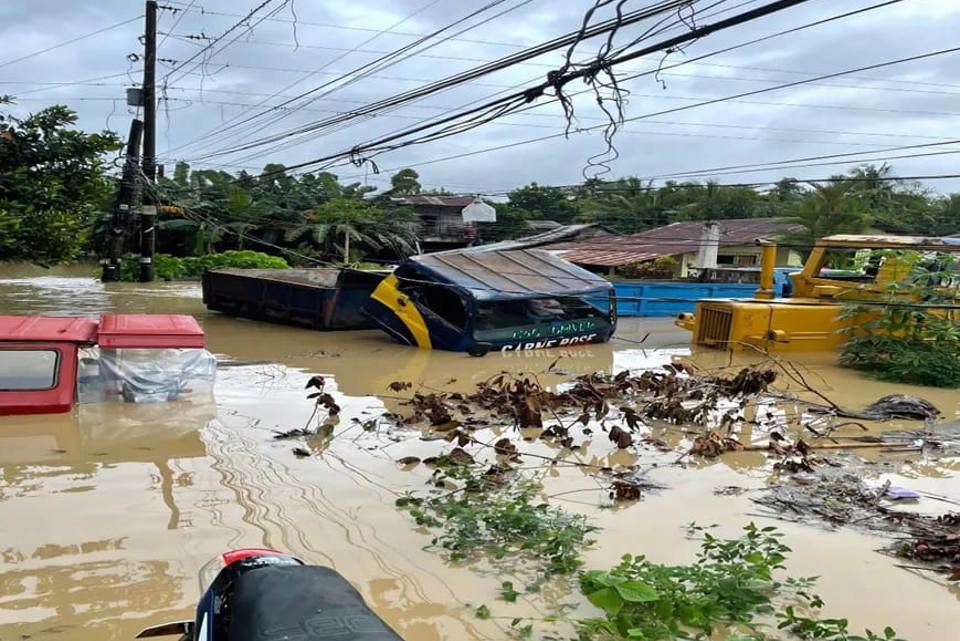
Damaged villages inundated with flood waters in northern Philippines after Typhoon Paeng. Photo Caritas Philippines
What was the impact of the typhoons in the Philippines?
The Philippines was hit by sixteen typhoons over a 12-month period, often with no time for communities to recover in between.
- Over 50 people lost their lives
- Over 370,000 people were affected
- Widespread flooding and landslides across multiple regions
Typhoon Noru (Karding)
Tropical Storm Paeng came very shortly after Typhoon Noru (also known as Karding), which was the most powerful cyclone to hit the country in 2022. Super Typhoon Noru slammed into the north of the country, forcing thousands of people from their homes and causing massive damage across multiple regions.
- At least five rescuers lost their lives
- 911,000 people were affected
- Over 56,000 homes damaged

Typhoon Paeng aftermath in Aklan, Philippines. Photo Caritas Philippines
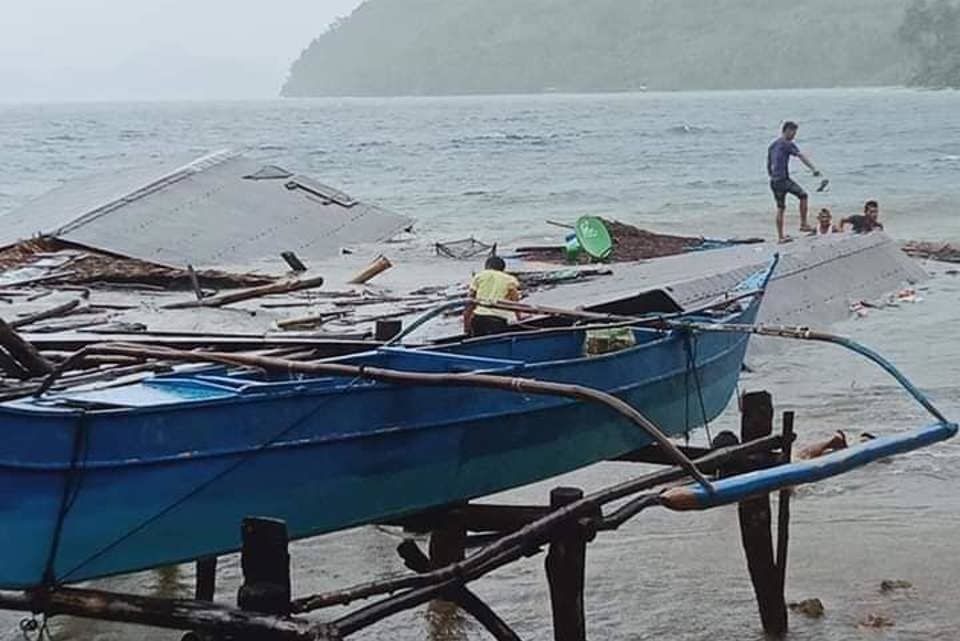
Typhoon Rai
Typhoon Rai brought torrential rain, strong winds, flash floods, landslides and extensive damage to homes and livelihoods in late 2021. You can read more about the immediate impact of Typhoon Rai here.
Over 1.8 million Filipinos were impacted by Typhoon Rai.
- Over 600,000 people evacuated
- 375 casualties
- Roads were impassable due to flooding and fallen trees
- Many communities were stranded without power, telecommunications and clean water
Why is the Philippines impacted by typhoons?
The Philippines is one of the countries most impacted by typhoons and super typhoons in the world. There are about 20 tropical cyclones in the Philippines every year, but most of them never reach the intensity of the mega-storms like Rai in 2021 or Noru in 2022.
As storms increase in both severity and frequency, the ability for communities to not only effectively plan but to also respond and recover is diminished with each passing storm.
Geography has an impact - as an archipelago of roughly 7,000 islands and islets in the Pacific Ocean, many communities live close to the water. This makes communities more vulnerable to tropical storms like typhoons.
But when typhoons do hit, they are now more destructive than ever before due to environmental and climate change.
- Higher temperatures as a result of climate change mean that the sea surface is now warmer. This removes the natural buffer on typhoon strength that used to be provided by colder water temperatures.
- Rising sea levels mean that sea waters are now closer to communities and more destructive than before during storms.
- Deforestation means that even weak storms can cause dangerous landslides or mudslides. Sometimes these landslides or mudslides cause as many deaths as the winds from the storm.
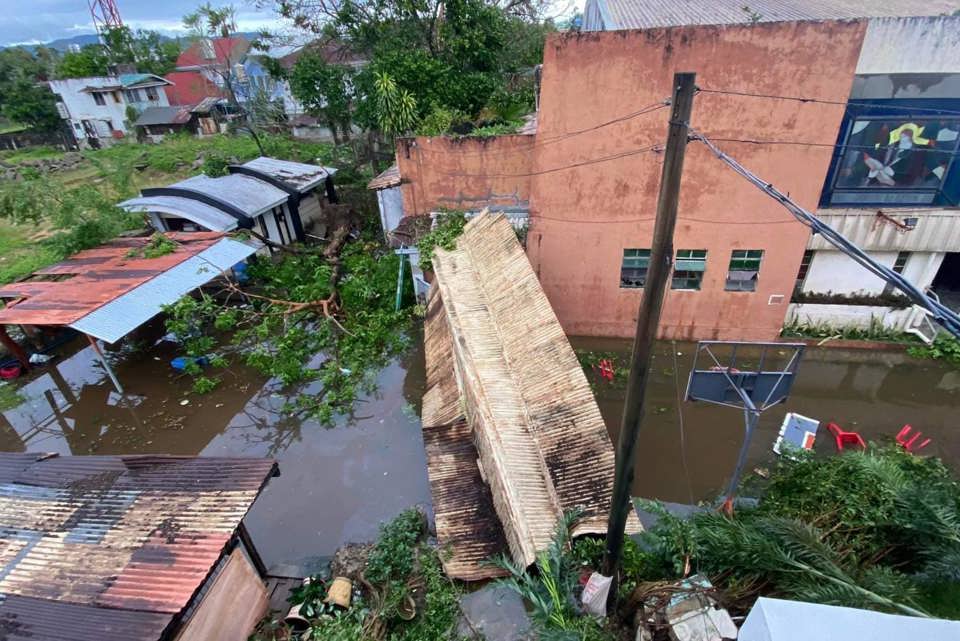
Destruction in Cebu after Typhoon Rai in late 2021. Photo: Caritas Cebu.
Your donations helped communities with:
Food, Water and Emergency Shelter
Hygiene, PPE and Sanitation Kits
Medication and Health Services
Trauma Support
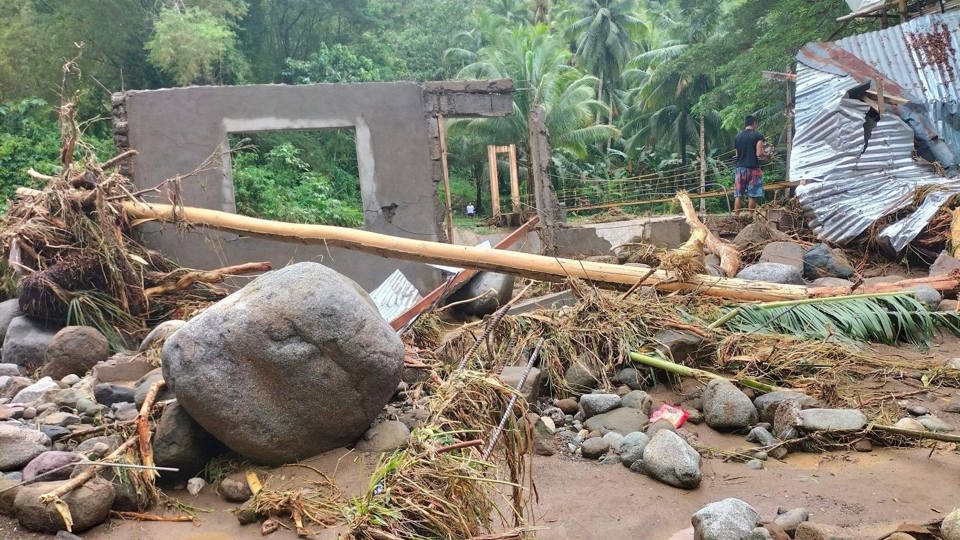
Destroyed houses in Santa Catalina, Negros Occidental, Philippines after Tropical Storm Paeng. Photo: Caritas Philippines
Where does my donation go?
The funds raised through our Emergency Response Appeal will be used to provide immediate and longer-term humanitarian assistance to communities affected disasters and emergencies around the world.












